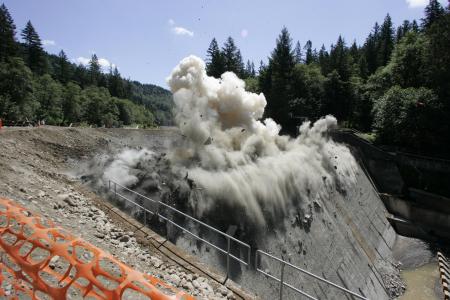A massive federal habitat restoration effort in the Columbia River Basin has spent more than $700 million on breaching levies, restoring tidal channels, reconnecting floodplains and other actions meant to boost salmon and steelhead populations imperiled by hydroelectric dams.
Experts say it’s likely the largest, most intensive, and most expensive habitat restoration program in the nation. Hundreds of restoration projects in Oregon, Idaho, Washington, and Montana have reopened more than 2,800 miles of habitat.
The monumental scope and price tag stem from habitat restoration’s role as the centerpiece in a federal management plan to relieve the damage that dams cause to fish. Critics of the plan say relying heavily on habitat improvements is not enough to restore wild fish runs and take them off the endangered species list.
In defending the plan, federal officials say record numbers of chinook, coho and sockeye salmon returned in 2014 to the Columbia and its tributaries – thanks in large part, they say, to the improved habitat.
But many of the basin’s 13 protected runs of salmon and steelhead are still barely hanging on and most of the returning fish were born in hatcheries, not in the wild – a reality that’s leading critics to call for the breaching of four dams.
[Photo credit: AP Photo/Don Ryan, Pool]
